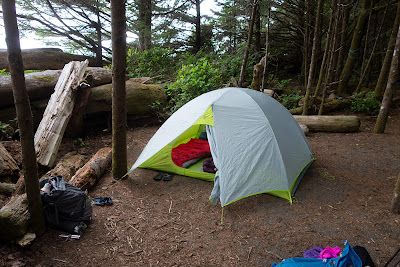We landed at the intersection of the Lapworth and Murchison ridge-lines, a spot Pam and I had been to a year earlier. Finding a flat spot to put down turned out to be more challenging than expected.
Pam and Elise getting ready to start. Mt Murchison in the background.
Looking at our route. Mt Conybeare is the dark peak in the upper right, Sedgwick is the distant peak in the centre. We followed this rocky ridge-line to Conybeare and beyond. There were a number of deep gaps in the ridge that required climbing in and out of. We brought a rope to allow us to rappel where necessary, but the route could definitely be done without one.
There were many small tarns along the initial ridge, but water became scare later in the trip.
Pam and Elise relaxing on the summit of Conybeare, mid-afternoon on day one. Our route for the following day would take us around the peak (Mt. Niobe) right of centre in the background. Choosing a descent off Conybeare took a bit of time, but we eventually opted for the long, less-steep west slope that led down to an alluring lake.
The basin on the northwest side of Conybeare became our camp for night one. We found a great little melt-water lake with flat gravel for a tent pad. You can see out tent in this picture if you look very closely. You can also see Pam and Elise...
The same shot, but at sunset. Elise is visible standing on a rock on the shoreline.
Leaving camp the next morning. You can see our lake on the left and Mt Sedgwick is the prominent peak in the background. Another trip perhaps?
Ascending steep heather slopes towards the shoulder of Mt. Niobe. It was a very hot day and this slope was south facing. We were relieved to soon move onto the shadier north side of Niobe.
Elise rappelling down a short face to reach the start of the snowfield traverse.
Pam on the snowfields on the north side of Mt Niobe. Mt Serratus is the broad peak in the background.
Elise in the same location.
Nearing the end of the day, we got nice views down into the Niobe basin and this amazing melt-water lake. At this point, we're about an hour from the end and only had to descend to Niobe Meadows and the Sandspit Campground a short distance beyond.
Our final camp on the shore of the lake. Soon after we arrived, we all went swimming - it felt great after the long hot day. The next morning we rose early and hiked 45 minutes to reach our pick-up spot for the helicopter flight home. We were all tired, but it felt good to have spent a couple of refreshing nights in the mountains close to home.






































































